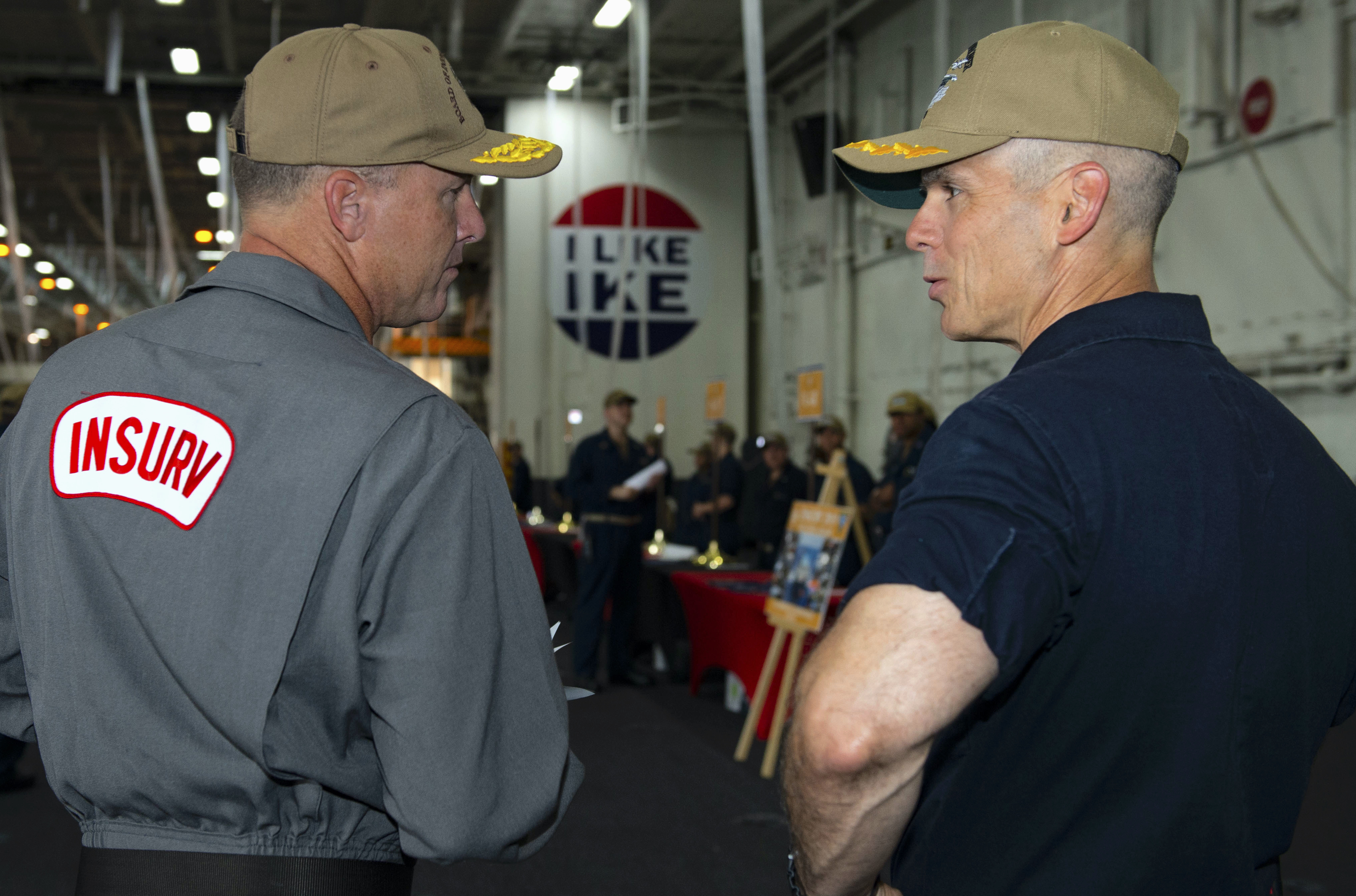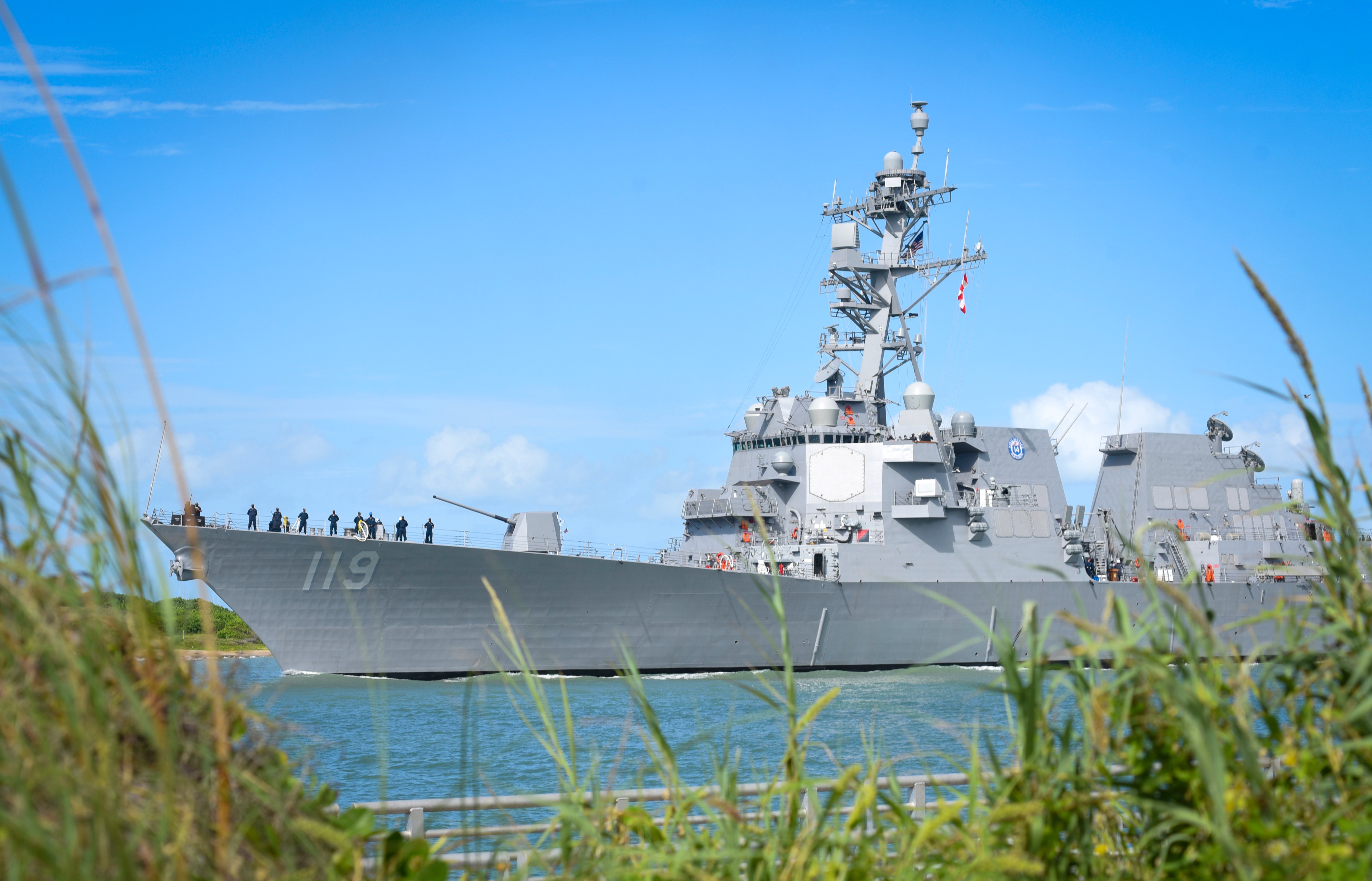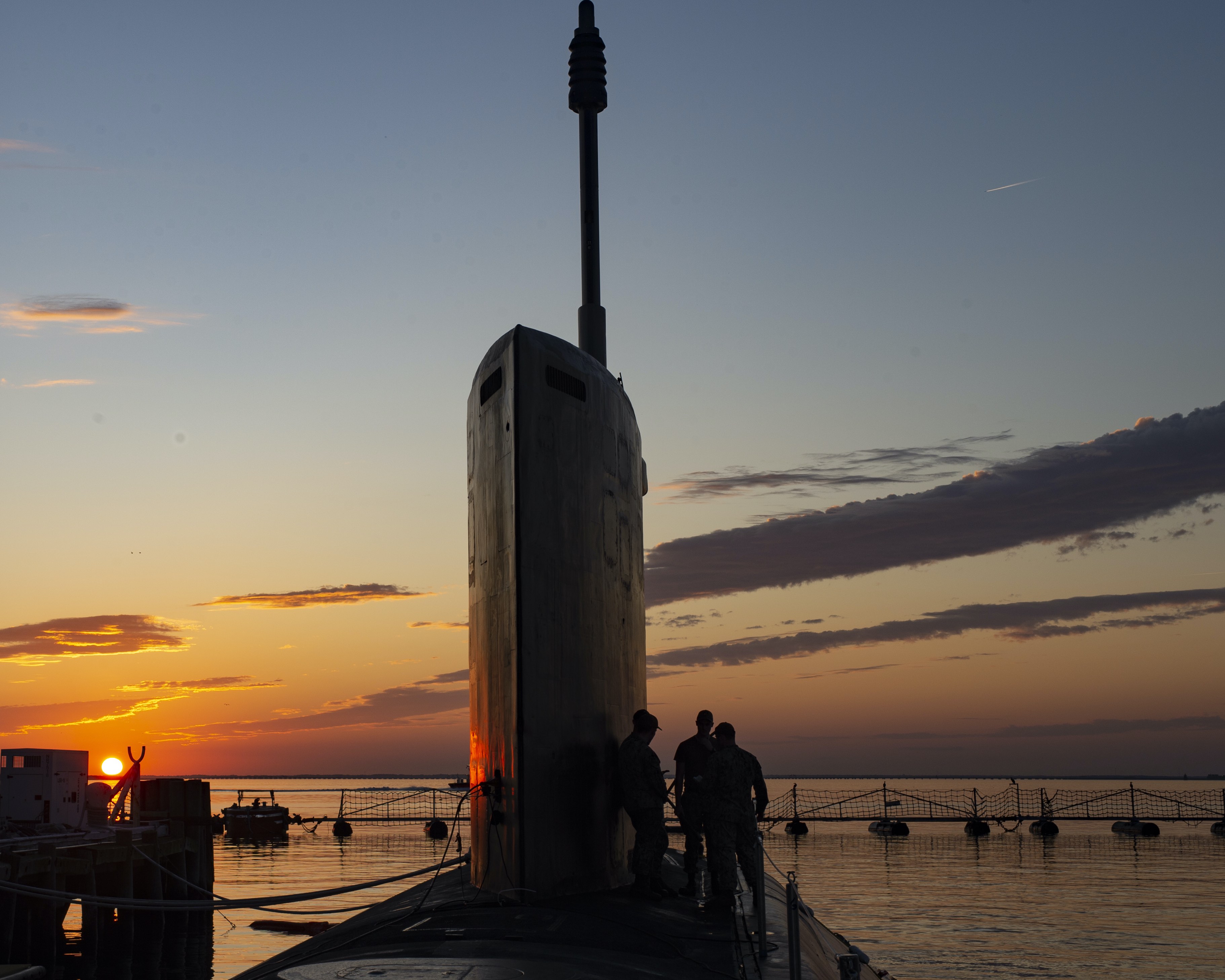
Navy ship readiness has trended down over the past three years, with many ship systems on surface ships and submarines, in particular, showing lower readiness scores in Fiscal Year 2020 compared to the recent average, according to the Board of Inspection and Survey (INSURV) annual report released today.
INSURV conducts material readiness inspections on new ships before they join the fleet to ensure they were built properly, as well as periodic inspections on existing ships in the fleet to ensure they’re still in good working condition.
In FY 2020 INSURV conducted 55 inspections, including 36 material inspections on ships in the fleet and 15 trials for new ships being delivered to the Navy.
“The overall Fleet material condition shows a negative trend over the last three years, but it is within a standard deviation of the 6-year average,” reads the report.
“Surface ship and submarine inspections drove this trend. The single CVN inspection executed this year resulted in a score near the 6-year CVN average. [Military Sealift Command] inspections show a slight positive trend, albeit with a small (4-ship) sample size. Overall, some functional areas and subsystems remain degraded or show declining trends, indicative of areas where material readiness is stressed.”
Out of 21 functional areas, surface ships were marked as degraded – or yellow on a color-coded chart showing areas in green, yellow or red – in 11 areas, compared to just six areas six years ago. Moreover, in 14 of the 21 areas, ships in FY 2020 tested below the six-year average.
“The surface force showed a declining trend in average IFOM (INSURV Figure of Merit), but this decline is within a standard deviation of the 6-year average,” the report reads.
In FY 2020, the following areas were deemed degraded in surface ships: main propulsion, electrical, damage control, deck, anti-submarine warfare, operations, weapons systems, Aegis weapons systems, aviation, ventilation and environmental protection.
Only information systems have seen improved readiness compared to six years ago, where it was listed in yellow but has now improved to green.
The report does not say which fleet ships underwent material inspections, though it notes that, on the surface ship side, three Ticonderoga-class cruisers, 16 Arleigh Burke-class destroyers, one Freedom-variant Littoral Combat Ship, one Independence-variant LCS, one Wasp-class amphibious assault ship, one Whidbey Island-class dock landing ship, one Harpers Ferry-class dock landing ship and one Avenger-class mine countermeasures ship were inspected.
More detailed information is available on new ships going through trials ahead of their delivery to the fleet. Within surface ships, both variants of the Littoral Combat Ship tested well, but the Arleigh Burke-class guided-missile destroyer program showed some highs and lows.
Two DDGs from Ingalls Shipbuilding, USS Paul Ignatius (DDG-117) and the future Delbert Black (DDG-119) underwent trials with INSURV.

For Delbert Black, “the program’s [acceptance trials] performance at [Ingalls] improved from the prior year’s ship. DDG 119 achieved the highest IFOM score out of six ships presented for AT since the program’s restart in 2016. The ship completed AT with no significant construction (starred) deficiencies.”
Still, Paul Ignatius’s acceptance trials didn’t go well last year, and the ship still struggled this year with final contract trials.
“FCT performance declined in FY 20. As reported last year, DDG 117 had the lowest AT IFOM score in the program’s history; she also scored the lowest FCT IFOM” in FY 2020, the report reads.
“The ship displayed significant deficiencies affecting her ballistic missile defense capabilities, main battery gun, main propulsion systems, and aviation hatch watertight integrity. The ship did not complete several major demonstrations because of equipment casualties as well as adverse weather conditions. INSURV returned in January 2020 to observe these events; while the uncompleted demonstrations were successful, three of the four significant equipment casualties recurred. DDG 117 completed all trials with significant uncorrected deficiencies affecting her AN/SPY-1D radar. Additionally, INSURV has never observed a satisfactory main battery firing on this ship.”
On the Freedom-variant LCS, USS St. Louis (LCS-19) and the future Minneapolis-St. Paul (LCS-21) went through acceptance trials at the Fincantieri Marinette Marine yard in Wisconsin.
“LCS 19 performed generally well but completed AT with a single starred deficiency affecting the blast protection coating system for its superstructure. LCS 21 completed AT by matching the program’s highest IFOM score, and without any starred deficiencies.”
Two final contractor trials that were planned to take place at Marinette were postponed due to COVID-19 related delays.
At the Austal USA yard in Alabama, the future Oakland (LCS-24) and Mobile (LCS-26) went through acceptance trials, and USS Cincinnati (LCS-20) went through final contract trials.
“The program’s AT performance continued its strong record over the past 2 years. Both LCS 24 and 26 performed well during AT with record or near-record IFOM scores and completed AT with no starred deficiencies,” the report notes, but it adds that these were the first two LCSs at Austal to receive the new AN/SPS-77(V)4 Sea Giraffe multifunction radar, which saw “significant casualties” on both ships that were corrected during trials.
For Cincinnati, its older AN/SPS-77(V)2 radar failed while underway and prevented the crew from conducting a live-fire demonstration of the main battery gun. INSURV came back at a later date for another demonstration, but “engineering casualties prevented the ship from getting underway,” the report reads.

The INSURV report shows that submarines are in better material condition overall but did see some decline in FY 2020 compared to recent years. Three Ohio-class ballistic missile submarines, five Los Angeles-class attack submarines and two Virginia-class attack subs went through material inspections in FY 2020.
“The FY20 submarine IFOM showed a decline from FY19 that is within one standard deviation of the 6-year average. Overall, for submarines, two functional areas were evaluated as degraded.” Those areas were auxiliaries and combat systems, whereas in the previous five years all areas were marked in green.
Nine of the 17 submarine functional areas scored below the six-year average in FY 2020, whereas five were above the recent average and three were “neutral.” Auxiliaries, combat systems, operations, deck, supply, habitability, NAVOSH (occupational health and safety), environmental protection and medical had fallen below the recent average score in FY 2020.
On new submarine trials, two Virginia-class attack subs – components of which are built at both Newport News Shipbuilding and General Dynamics Electric Boat, and the yards rotate final delivery of the sub-two went through trials. USS Delaware (SSN-791), delivered by Newport News, completed a combined trial and final contract trial with one starred deficiency. USS Vermont (SSN-792) completed its trial with no starred deficiencies.
Only one Nimitz-class carrier went through an INSURV material inspection this year. The report notes that, due to the small sample size, the organization looks at carrier readiness over a longer period to try to see useful trends. Looking from 2009 until 2020, INSURV states that overall readiness is improved. Just six of 18 carrier functional areas were deemed deficient in the years from 2017 through 2020, compared to 10 in the years from 2009 to 2012. Eleven of the 18 areas are above the 12-year average in the most recent few years, whereas seven have fallen below the 12-year average. Areas that have improved over this timeframe include auxiliaries, propulsion, communication, environmental protection and preservation. Only NAVOSH is listed as degraded in recent years where it wasn’t in the 2009 to 2012 timeframe.
The INSURV report notes that inspections continued in FY 2020 despite the COVID-19 pandemic, as they were considered to be an essential mission. However, due to requirements such as quarantines ahead of boarding a ship and other measures meant to limit the spread of the virus, the report notes that INSURV completed fewer inspections than planned, leading to an increase in the backlog of overdue inspections.
The report also states that material inspections for ships in the fleet were conducted with minimal notice of about 30 days given to ships. Because INSURV inspection schedules were previously announced so far in advance, ship captains could devote significant time to getting ready and ensuring a good score, a practice that was criticized for inflating INSURV scores while decreasing actual readiness of the ships and crews because they were preparing for a test instead of preparing to deploy and operate abroad.





